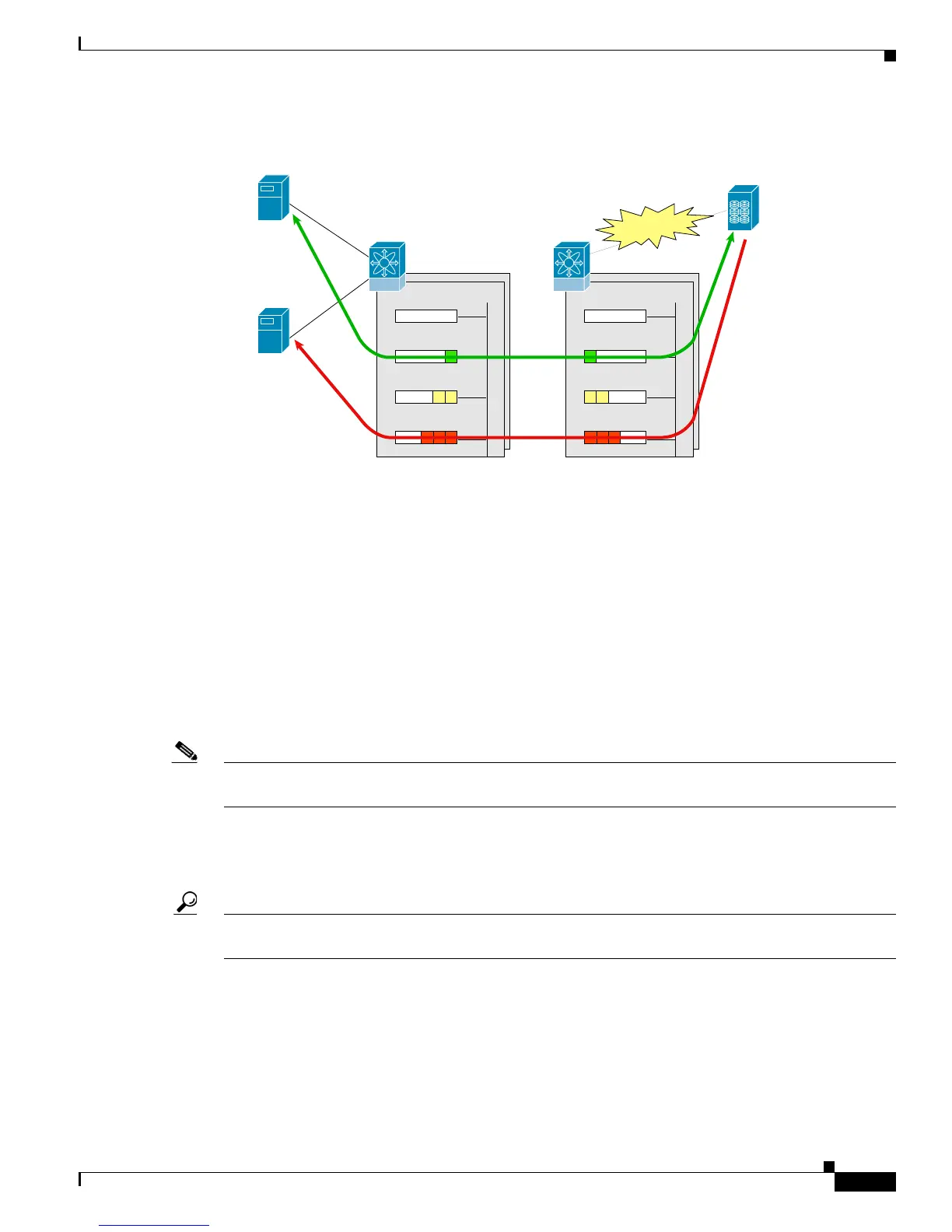Send documentation comments to mdsfeedback-doc@cisco.com
64-5
Cisco MDS 9000 Family Fabric Manager Configuration Guide
OL-17256-03, Cisco MDS NX-OS Release 4.x
Chapter 64 Configuring Fabric Congestion Control and QoS
QoS
Figure 64-2 Prioritizing Data Traffic
In Figure 64-2, the OLTP traffic arriving at Switch 1 is marked with a high priority level of throughput
classification (class map) and marking (policy map). Similarly, the backup traffic is marked with a low
priority level. The traffic is sent to the corresponding priority queue within a virtual output queue (VOQ).
A deficit weighted round robin (DWRR) scheduler configured in the first switch ensures that high
priority traffic is treated better than low priority traffic. For example, DWRR weights of 70:20:10 implies
that the high priority queue is serviced at 7 times the rate of the low priority queue. This guarantees lower
delays and higher bandwidths to high priority traffic if congestion sets in. A similar configuration in the
second switch ensures the same traffic treatment in the other direction.
If the ISL is congested when the OLTP server sends a request, the request is queued in the high priority
queue and is serviced almost immediately since the high priority queue is not congested. The scheduler
assigns its priority over the backup traffic in the low priority queue.
Note When the high priority queue does not have traffic flowing through, the low priority queue uses all the
bandwidth and is not restricted to the configured value.
A similar occurrence in Switch 2 sends a response to the transaction request. The round trip delay
experienced by the OLTP server is independent of the volume of low priority traffic or the ISL
congestion. The backup traffic uses the available ISL bandwidth when it is not used by the OLTP traffic.
Tip To achieve this traffic differentiation, be sure to enable FCC (see the “Enabling FCC” section on
page 64-2).
VSAN Versus Zone-Based QoS
While you can configure both zone-based QoS and VSAN-based QoS configurations in the same switch,
both configurations have significant differences. Table 64-1 highlights the differences between
configuring QoS priorities based on VSANs versus zones.
VOQ(s)
Absolute
High
Medium
Low
FCFC
VOQ(s)
Absolute
High
Medium
Low
Switch 1 Switch 2
Congestion
105228
Disk
OLTP server
Backup server

